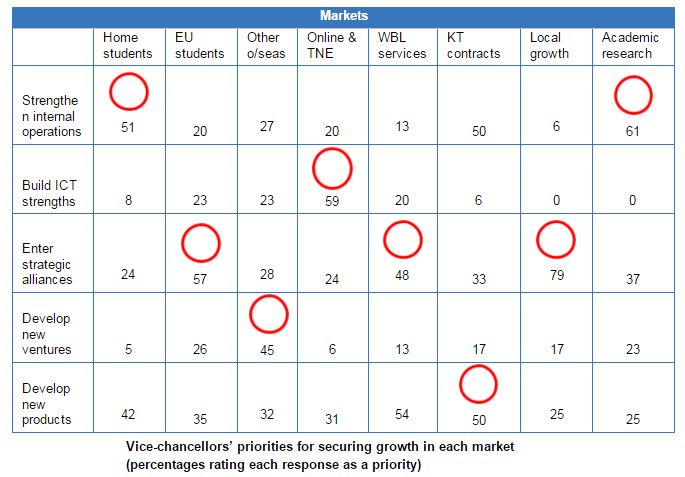University campus-based teaching may well be shrinking as a core business, according to a majority of vice-chancellors surveyed by PA Consulting. Paul Woodgates and Mike Boxall consider some of the opportunities and challenges facing institutions as they diversify income streams in the coming decade.
The resolute optimism of university leaders over the outlook for their own institutions, coupled with dark gloom over the prospects for other providers, has been a recurrent feature of the PA Consulting annual survey of vice-chancellors.
Our most recent survey, undertaken against the background of 2016’s game-changing developments in the regulatory and market context for UK higher education, was no different in this regard, but did reveal a strong view that the business of all universities will become very different over coming years.
Opportunities for diversification
A significant majority of vice-chancellors predicted that the core business of campus-based teaching, for both home and overseas students, may well be shrinking, and that established universities will have to look elsewhere for the revenues and margins they need for sustainability.
The opportunities for diversification are there to be seized, but will require radical rethinking of current business and operating models.
In our survey, almost half of vice-chancellors predicted that the share of home students in their overall business would be flat or falling over the next five to ten years, while 78% foresaw significant declines in EU student income and 44% expected similar falls in other overseas student revenues.
On the upside, 45% expected significant growth from online programmes (including transnational or TNE provision), 65% were looking to grow work-based learning (WBL) services, 78% highlighted knowledge transfer (KT) contracts and 55% were optimistic about opportunities from local skills and growth programmes.
Further, 65% predicted significant growth in their income from academic research.
‘Far from assured’
Of course, these potential growth areas start from lower baselines than the flat-lining or even falling tuition fee mainstays that they could replace. Taken together, they point to a very different HE business mix emerging over the coming decade.
The viability of this shift is far from assured. Not only are the potential revenues from these ‘alternative’ sources highly speculative, the associated costs and margins are quite different to the familiar revenues and costs of campus education.
Current ways of working in universities aren’t generally known for the smart, agile and responsive capabilities this rebalancing will need.
The challenge
Growth in revenues from academic research is a double-edged sword, given the inbuilt 25-30% shortfall in full economic cost recovery in this area. Other potential seams of income like those mentioned above have so far often been treated as minor sources of revenue underpinned by core teaching and research operations; building these into sustainable income streams will be challenging.
The respondents to our survey recognised these challenges, and were already planning their responses. The table below shows the top priorities flagged by vice-chancellors for building competitive capabilities in each market area, with the percentages shown for those highlighting each type of response (respondents could indicate multiple priorities):
 It is apparent from these responses that vice-chancellors are planning very different strategies for the different markets that they plan to operate in – emphasising improvements to current operations to protect their established teaching and research markets while looking to strategic alliances and new product developments to power their entry or growth into (for them) emerging market areas like WBL, TNE and KT.
It is apparent from these responses that vice-chancellors are planning very different strategies for the different markets that they plan to operate in – emphasising improvements to current operations to protect their established teaching and research markets while looking to strategic alliances and new product developments to power their entry or growth into (for them) emerging market areas like WBL, TNE and KT.
The difficulties of developing the business capabilities and ways of working needed to succeed in new and alternative markets must not be underestimated. Finding and maintaining business critical partnerships is not a core competence of most universities, and past experiences have been decidedly mixed.
Agile and fast-moving innovation
Universities’ established processes for designing and implementing new educational offers tend to be time-consuming and bureaucratic, when the need is for agile and fast-moving innovation. Current finance and information systems may struggle to manage very different patterns of cash flow and payments.
The importance of business diversification is clear and well understood by most, although (judging by our survey responses) not all, university leaders. The accompanying need to develop agile, responsive and entrepreneurial ways of working must be given equal prominence in planning strategies.








